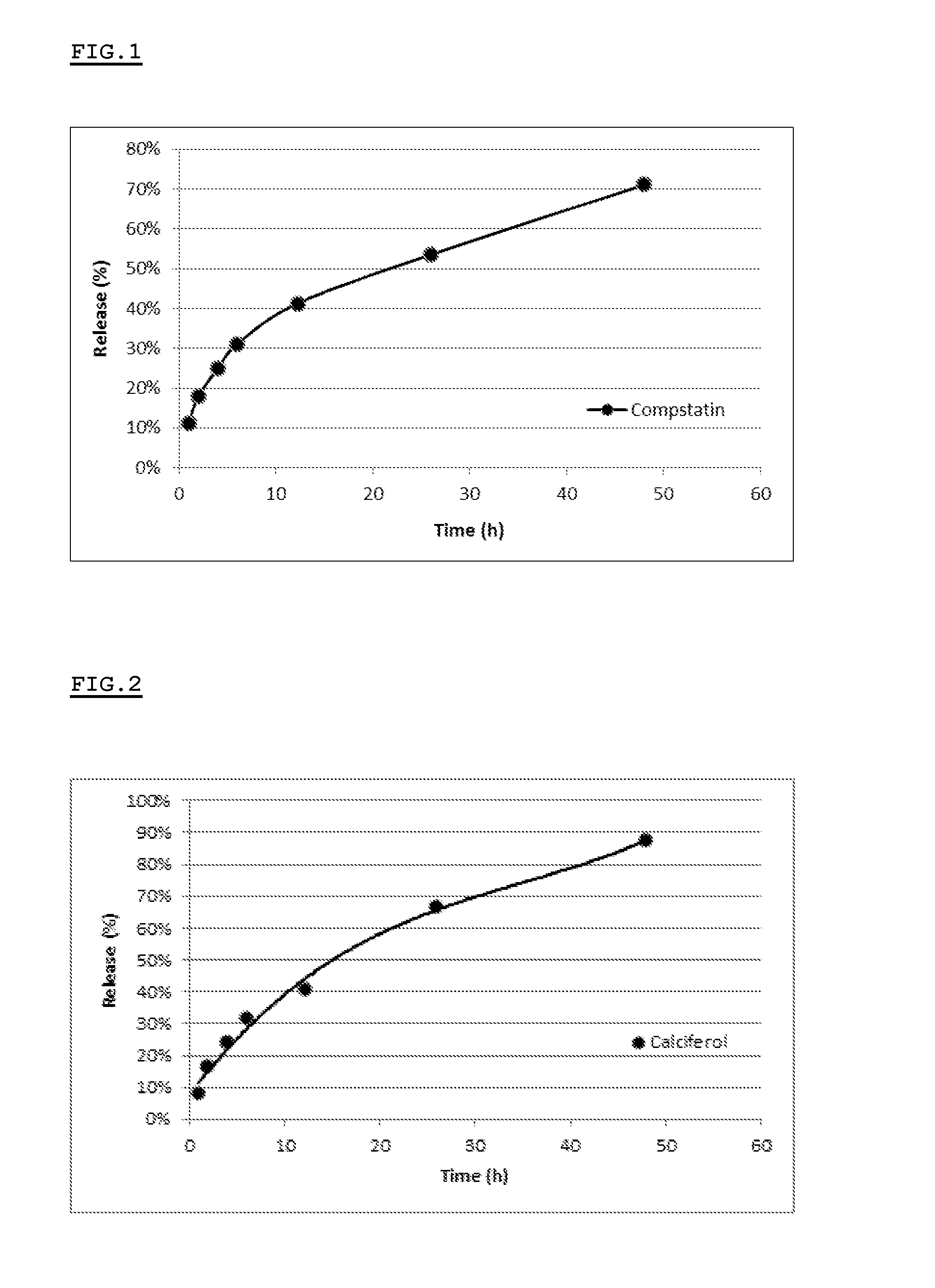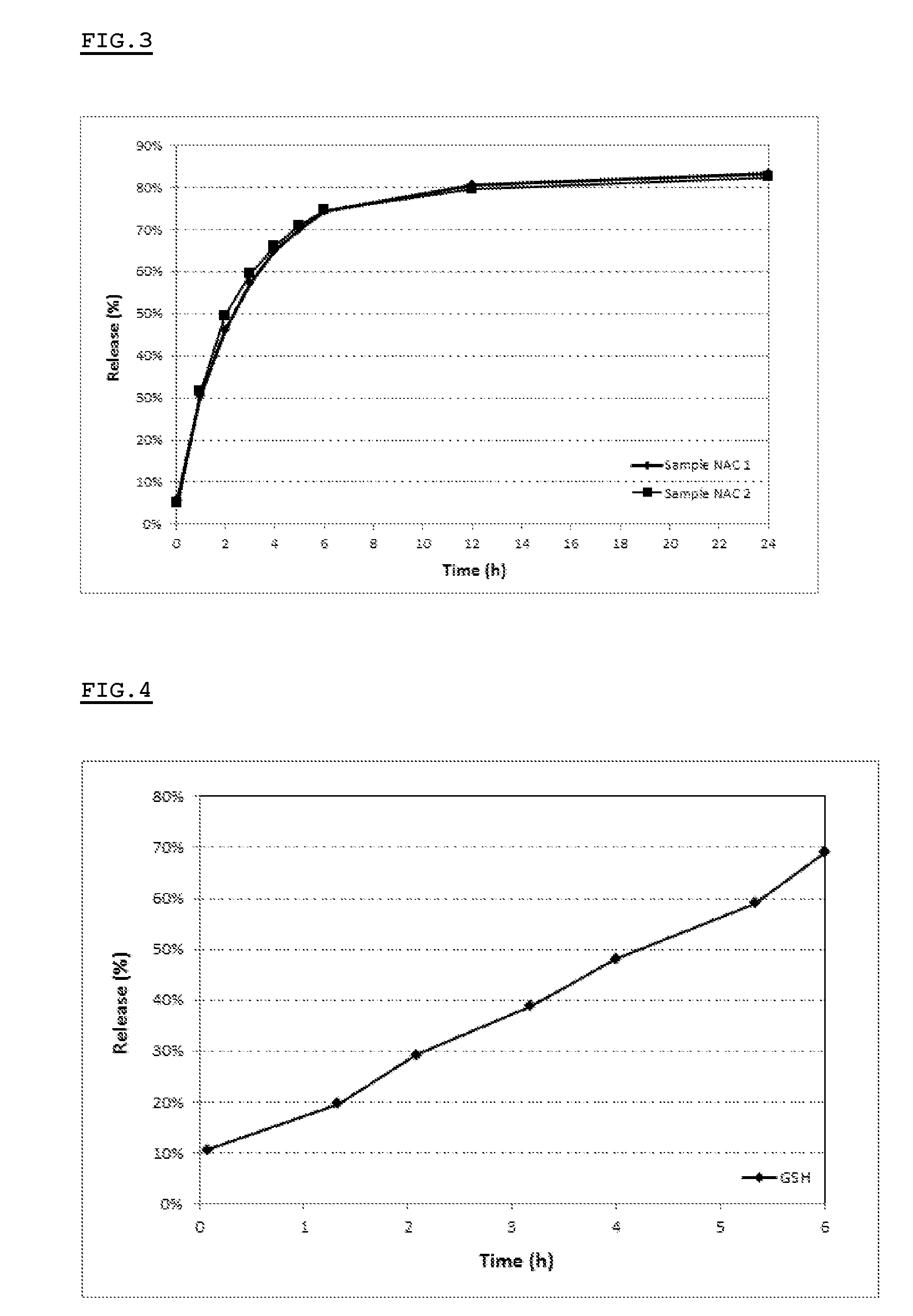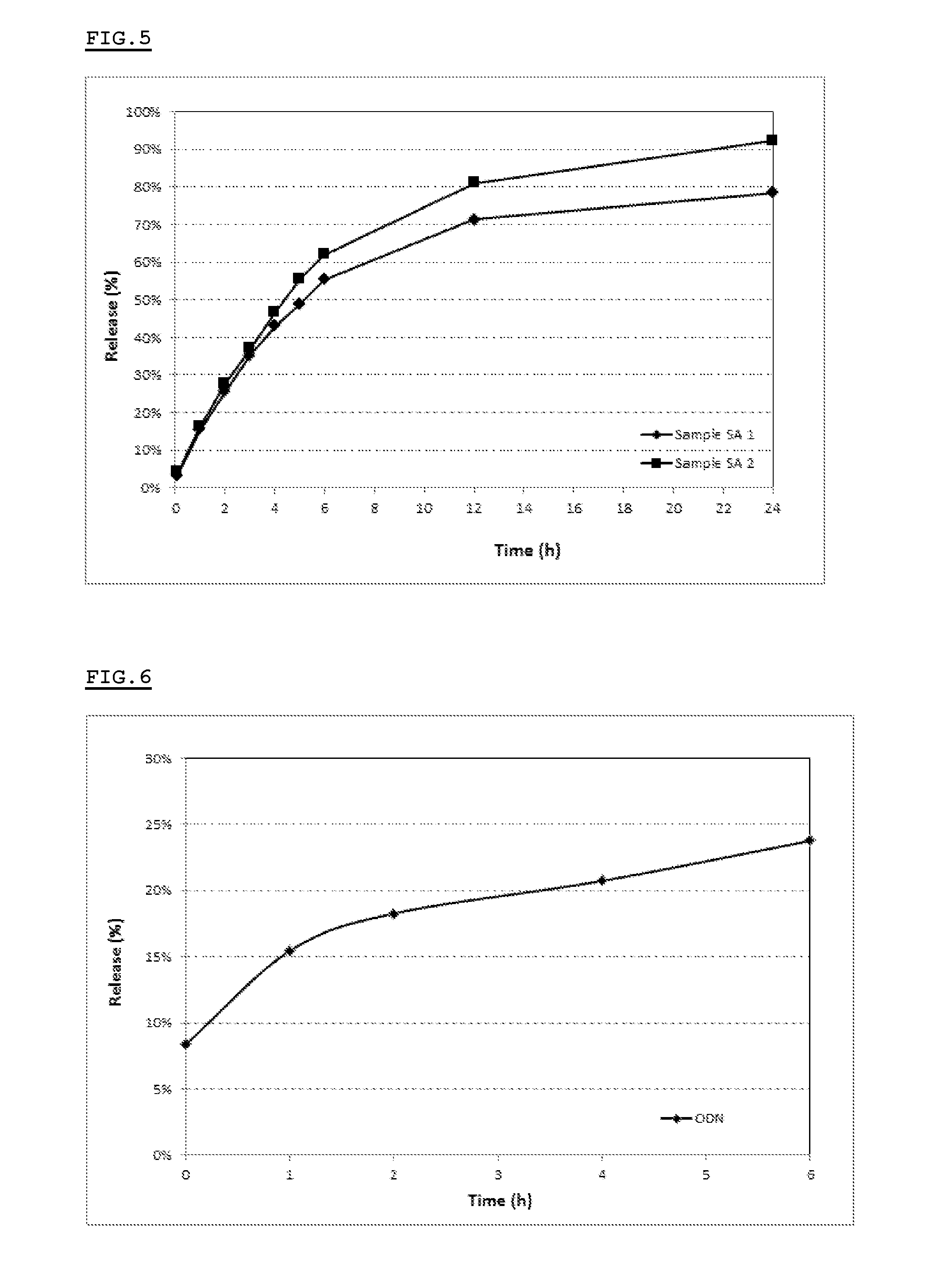Low Molecular Weight Immune-Modulators As Adjuvants for Specific Immunotherapy
a technology of immune-modulator and specific immunotherapy, which is applied in the direction of liposomal delivery, antibody medical ingredients, pharmaceutical non-active ingredients, etc., to achieve the effects of restoring lasting immunological tolerance, controlling development, and restoring immunological toleran
- Summary
- Abstract
- Description
- Claims
- Application Information
AI Technical Summary
Benefits of technology
Problems solved by technology
Method used
Image
Examples
example 1
Preparation of Immune Modulators
[0419]This example describes the synthesis of C5aR inhibitor PMX53, murine Il-4 antagonist OY, TNFR1-specific antisense oligonucleotides and mutant TNF-alpha R1antTNF.
1.1. Synthesis of C5aR Antagonist PMX53
[0420]The C5aR antagonist PMX53 (AcF-(OPdChaWR)) is synthesized as described (Finch et al., 1999). First, a linear peptide is synthesized on a peptide synthesizer using Fmoc chemistry (433A; Applied Biosystems, Foster City, Calif.), followed by formation of a lactam bridge in solution as described (Finch et al., 1999). The peptide is purified using reversed-phase high-performance liquid chromatography. The mass is confirmed by matrix-assisted laser desorption ionization / time-of-flight mass spectrometry.
1.2. Expression of Recombinant Murine IL-4 Antagonist QY
[0421]The murine IL-4 mutant QY (Q116D / Y119D) is analogous to the R121D / Y124D double mutant of human IL-4, and an excess of the murine QY mutant has been shown to completely inhibit responses tow...
example 2
Synthesis of Thermogelling PLGA-PEG-PLGA Hydrogels
[0450]This example describes the synthesis and chacterization of thermogelling PLGA-PEG-PLGA hydrogels.
2.1. Synthesis of Thermogelling PLGA-PEG-PLGA Hydrogels
[0451]The biodegradable triblock polymer described in this example has a PLG / PEG weight ratio of 2.3 (70 / 30), and a lactide / glycolide molar ratio of approx. 15 / 1. Synthesis of the triblock copolymer is performed according to published protocols (Qiao et al., 2005).
2.1.1. Copolymer Synthesis
[0452]Polyethylene glycol (PEG 1500) was purchased from Fluka, poly(DL-lactide) from Sigma, glycolide (1,4-Dioxane-2,5-dione) from Sigma, and stannous 2-ethylhexanoate from Aldrich.
[0453]A total of 25 g of DL-lactide, glycolide and PEG are used for polymerization (16.6 g DL-lactide, 0.9 g glycolide, 7.5 g PEG 1500). Under nitrogen atmosphere, PEG 1500 is dried under vacuum and stirring at 120° C. for 2 h in a vigorously dried Erlenmeyer reaction flask. Then the reaction flask is filled with dr...
example 3
Release of Immune Modulators from Hydrogels
[0460]This example describes the release characteristics of selected embedded low to moderate weight immune-modulators from thermogelling PLGA-PEG-PLGA hydrogels.
3.1. Release of Complement Inhibitor Compstatin from PLGA-PEG-PLGA Hydrogels
[0461]This example describes the release of the 13-residue cyclic peptide (H-I[CVVQDWGHHRC]T-NH2) (termed compstatin) from the hydrogel of Example 2.1. Compstatin is purchased from Tocris Bioscience (Bristol, UK).
[0462]The PLGA-PEG-PLGA triblock copolymer of Example 2.1. is dissolved at room temperature in 200 μl PBS pH 7.4 containing different concentrations of compstatin (0.5 mg up to 2 mg / ml) to make a 20% w / w or 25% w / w solution. Then the formulation is placed in a 2 ml vial, incubated at 37° C. for 2 min until gelling, and 0.2 ml of PBS pH 7.4 is added. The vial is incubated at 37° C. At specified sample collection times, a sample is withdrawn and replaced by an identical volume of PBS pH 7.4 to mainta...
PUM
| Property | Measurement | Unit |
|---|---|---|
| Temperature | aaaaa | aaaaa |
| Temperature | aaaaa | aaaaa |
| Temperature | aaaaa | aaaaa |
Abstract
Description
Claims
Application Information
 Login to View More
Login to View More - R&D
- Intellectual Property
- Life Sciences
- Materials
- Tech Scout
- Unparalleled Data Quality
- Higher Quality Content
- 60% Fewer Hallucinations
Browse by: Latest US Patents, China's latest patents, Technical Efficacy Thesaurus, Application Domain, Technology Topic, Popular Technical Reports.
© 2025 PatSnap. All rights reserved.Legal|Privacy policy|Modern Slavery Act Transparency Statement|Sitemap|About US| Contact US: help@patsnap.com



